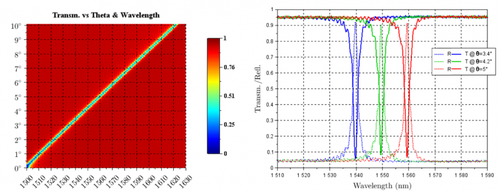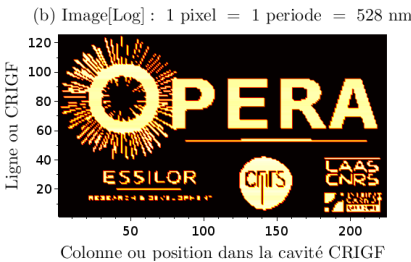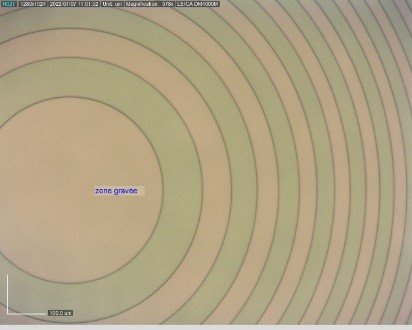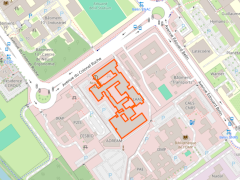Wavefront engineering
The Photonics team is focused on the development of integrated optical functions on III-V, glass or silicon substrates, in order to demonstrate the possibilities of processing the wavefront between source and sensor to shape a passive and/or active function.
Modulation of the wavefront of an optical beam is a key element in the photonic systems of the future, with many potential applications, particularly for transparent and active systems.
In this context, the team is involved in three lines of work:
Subwavelength periodic components for free space optics :

In recent years, this theme has given rise to an abundance of work on structures known as "High Contrast Gratings" (HCG), "Zero Contrast Gratings" (ZCG) or even "Flat Optics"... Applications range from simple spectral or spatial filtering to the creation of 3D imaging systems. This is an extremely open field of research, in which many conceptual and technological hurdles have yet to be overcome. In this very rich field, and to meet the growing needs for space observation handled by CNES in Toulouse, we have focused our studies on a new generation of nanostructured spectral filters, which ideally should be ultra-selective, wavelength-tunable and polarization-independent.
Fast active monolithic optical scanners
These studies are being carried out as part of the SWEET project, with four main objectives: optimizing the design of complex structures, taking into account their robustness in the face of manufacturing imperfections; demonstrating rapid index modulation in nanostructures; producing components for active control of metasurfaces; and finally, using transparency to enable stacking of active optical functions.
Ophtalmic optical components

In this context, the PHOTO team is working on the design of flat lenses, spectral filters and polarizers using nano-photonic solutions based on (sub-) diffractive gratings on a flat or even curved transparent surface, while integrating usage constraints. This includes the development of technological building blocks for structuring a specific industry.

Retour à Photonique












